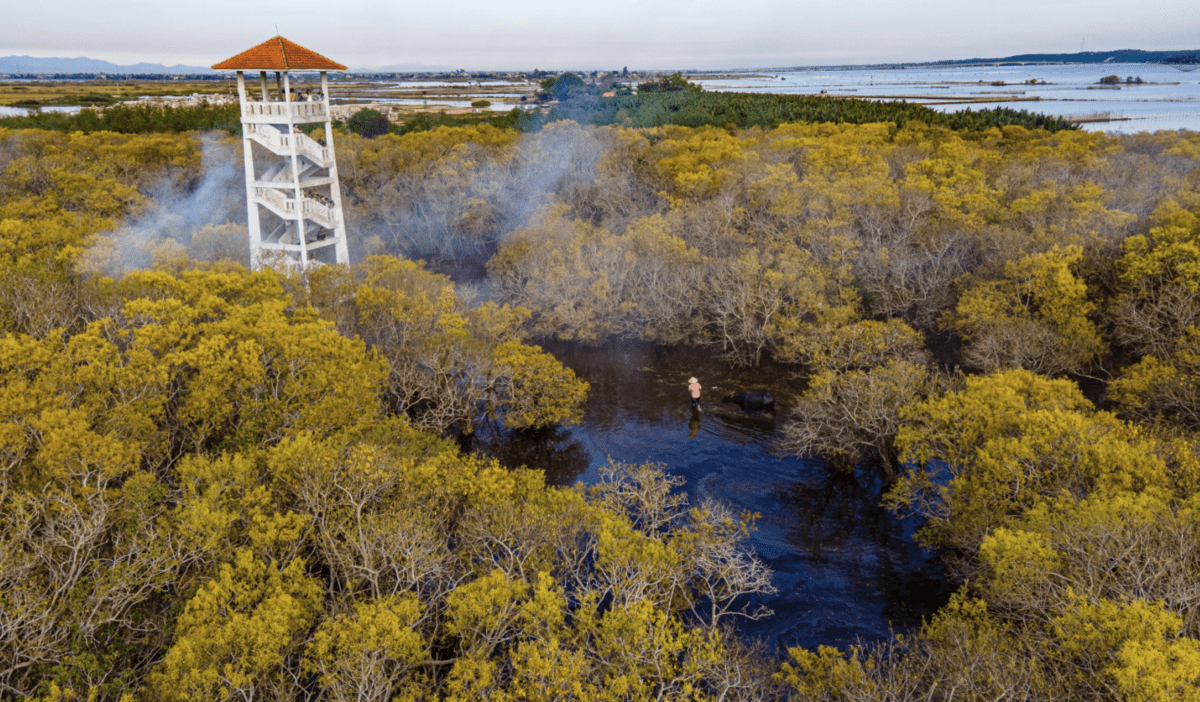
At a recent workshop about coastal forest carbon credit trade, a representative of Restore Blue discussed blue carbon. In blue ecosystems, carbon is absorbed when mangroves, mudflats, seagrasses and tidal forests are restored. Forest owners have additional sources of income from blue carbon recovery.
Blue carbon credit is a higher class of credit for adapting to and mitigating climate change’s consequences and restoring biodiversity.
Prof Sarah Wheeler from Make History said that the blue ecosystem has significant importance in storing carbon. The ecosystem just covers 2 percent of the ocean surface, but accounts for 50 percent of ocean carbon volume absorption.
One hectare of mangroves has a carbon absorption capability five times higher than one hectare of terrestrial forests.
With sea and mudflats, mangrove forests often grow quickly, offering carbon storage, sequestration and absorption in the atmosphere.
In addition, blue ecosystems help reduce storms, floods and erosion, protect coastal areas from waves, create jobs, and ensure food security.
They protect 6 million people from floods every year, and prevent damage to productive assets worth $24 billion.
Many countries have developed blue carbon credits for trade in voluntary and compulsory carbon credit markets. Vietnam has great advantages in developing this product.
By the end of 2023, Vietnam had collected trillions of dong from selling terrestrial forest carbon credits.
Vietnam has a long coastline of 3,260 kilometers. Mangrove forests play an important role in solving issues caused by climate change and biodiversity loss, and in improving climate resistance and green growth.
The mangrove forests can create a huge amount of blue carbon credits each year.
NatureCo said Vietnam can create nearly 400 million carbon credits in the next 30 years from all landscapes and types of projects.
Of these, afforestation and re-afforestation would be 31.2 million carbon credits, while combined agriculture-forestry activities would be 124.2 million, anti-deforestation activities 99.1 million.
Meanwhile, the improvement of forest management efficiency would bring 164.5 million credits, mangrove forest protection 4.7 million credits, and mangrove forest restoration 2.8 million credits.
The activities to improve forest management quality include managing logging in protected forests, enriching planted forests, extending harvest cycles, and shifting from poor production forests to rich forests.
Deforestation activities include reducing net greenhouse gas emissions by preventing degradation of existing forest areas. Agroforestry activities include tree planting, and timber forest and natural vegetation regeneration.
Preservation and management activities aim to protect the mangrove ecosystem from forest degradation, devastation and loss. The restoration of damaged mangroves also creates blue carbon credits.
Market demand
Carbon credit markets grew by 164 percent worldwide in 2021, and are expected to reach value of $50-100 billion by 2030. According to PTI, global carbon credit now is 58 billion credits a year.
Experts believe that Vietnam has great potential in carbon credits, but faces challenges in commercializing the credits.
Vietnam needs to have a more detailed roadmap to commercialize credits in the voluntary carbon market, including project registration and guidance about benefit sharing in order to encourage investment.
In addition, guidance on implementation is needed the provincial level because investors will come to seek partners for projects.
Restore Blue thinks that it is necessary to invest in scientific research and ensure indigenous knowledge; create a legal framework and design blue carbon calculation methods; diversify financial sources; and set up a reasonable profit sharing mechanism.
Prof Sarah Wheeler said that blue carbon needs to be priced in a different way than normal carbon.
In the world market, intermediaries are reselling offset credits such as COTAP, Planet Moja, and Zero Mission at quoted retail prices of $10-25/MtCO2e. Some buyers are willing to pay $35/MtCO2e.
Tam An